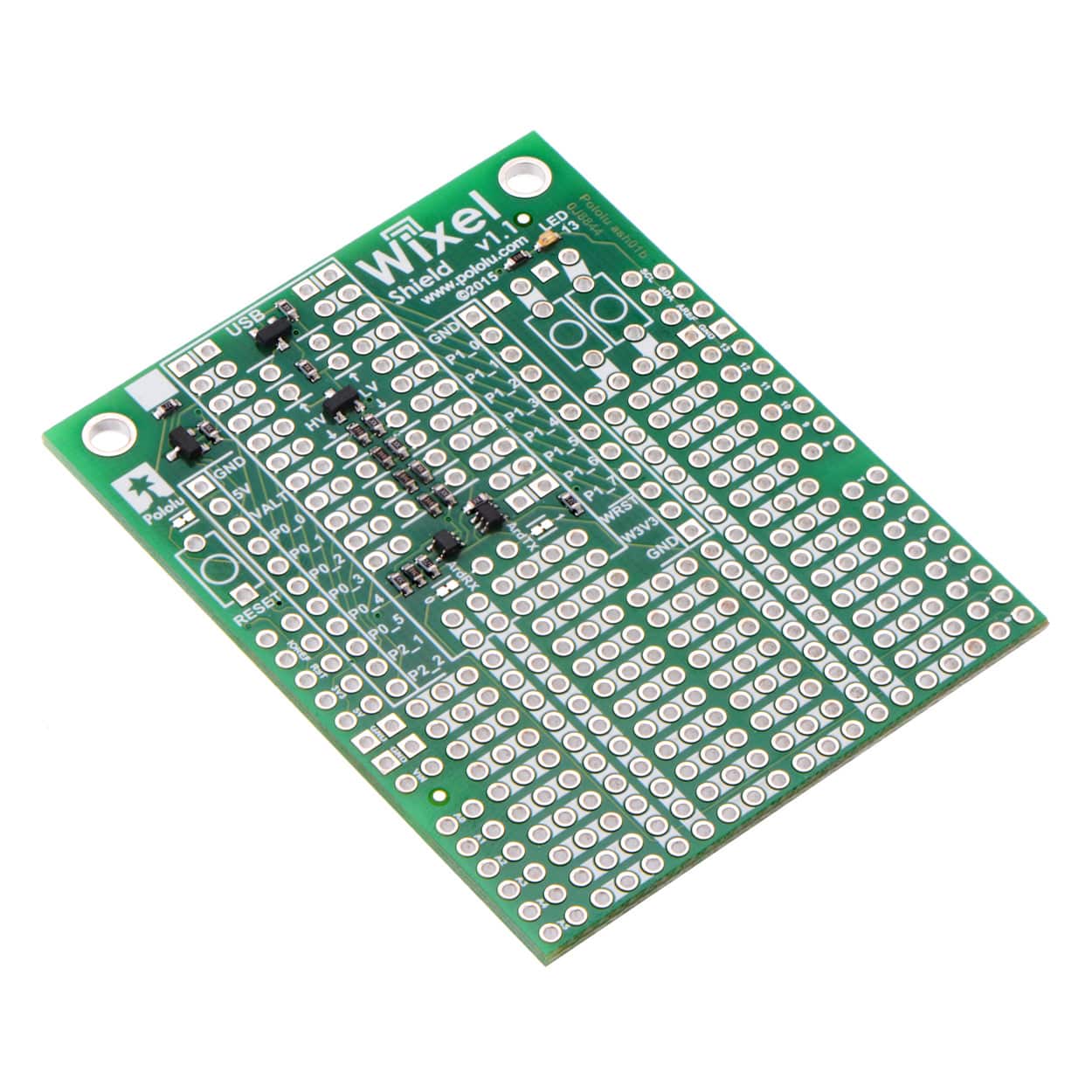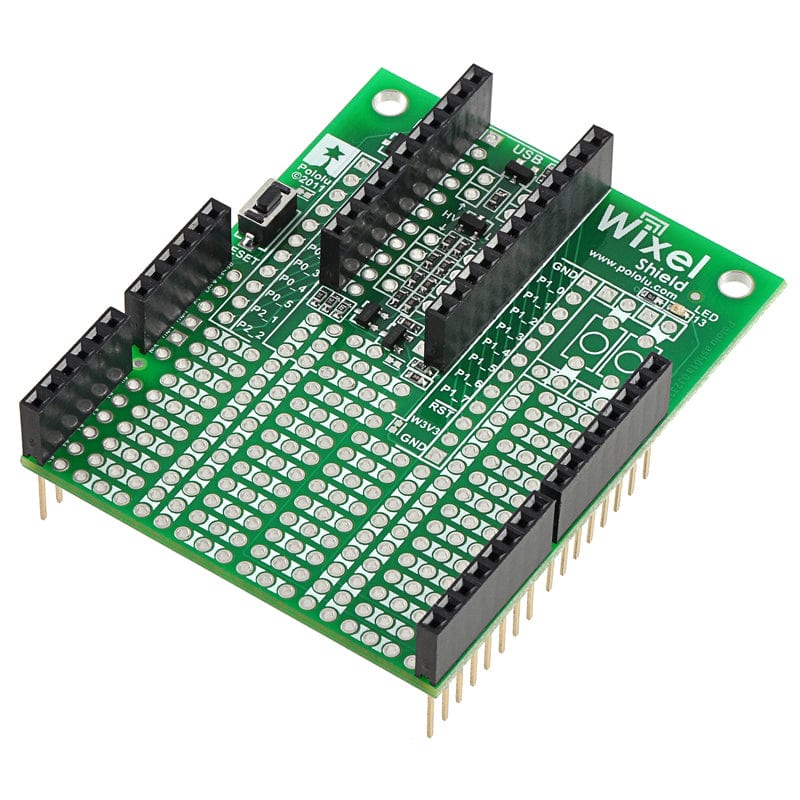






Login / Signup
Cart
Your cart is empty







The Wixel shield seamlessly enables a wireless link (with a typical range of ~50 feet) to duplicate the functionality of your Arduino’s USB interface, which means you can use the standard Arduino computer software to:
More generally, the shield can also be used for wireless communication between an Arduino or Arduino clone and other embedded systems (including additional Arduinos). Alternatively, this board can also be used without an Arduino as a general-purpose Wixel prototyping board.
Note: The Wixel shield does not interfere with the Arduino’s existing USB circuitry, so the Arduino’s traditional wired USB connection can still be used while the shield is connected.
This is version 1.1 (v1.1) of the Wixel Shield, which replaces the original Wixel Shield for Arduino. It adds pass-throughs for the four new pins (SCL, SDA, IOREF, and an unused pin) introduced on the Arduino Uno R3 and presents on all newer Arduinos (the original Wixel Shield was designed before the R3 was released).
The v1.1 shield also features improved level shifter circuits that convert between the voltage on the Arduino’s IOREF pin and the Wixel’s 3.3 V, allowing it to work automatically with 3.3 V and 5 V Arduino boards. Generally speaking, most users should not notice any other differences between the two shield versions; details can be found in this section of the user’s guide.
Wireless communication requires a pair of Wixels, which are sold separately. An Arduino board is not included.
The Wixel shield ships with all of the surface-mount parts populated. However, soldering is required for the assembly of the included through-hole parts. The following through-hole parts are included with the Wixel shield:
This provides everything you need to plug an assembled Wixel into the shield and the shield into an Arduino.
The Wixel shield for Arduino opens the door for many new Arduino projects. Here are just a few project ideas:
Advanced users can write programs for their Wixels to make use of the its 12 free general-purpose I/O lines, including 5 analog inputs, or to develop more complex wireless communication networks.
Note: The Wixel Shield’s wireless programming feature is not compatible with the Arduino Leonardo or the A-Star 32U4 Prime.












